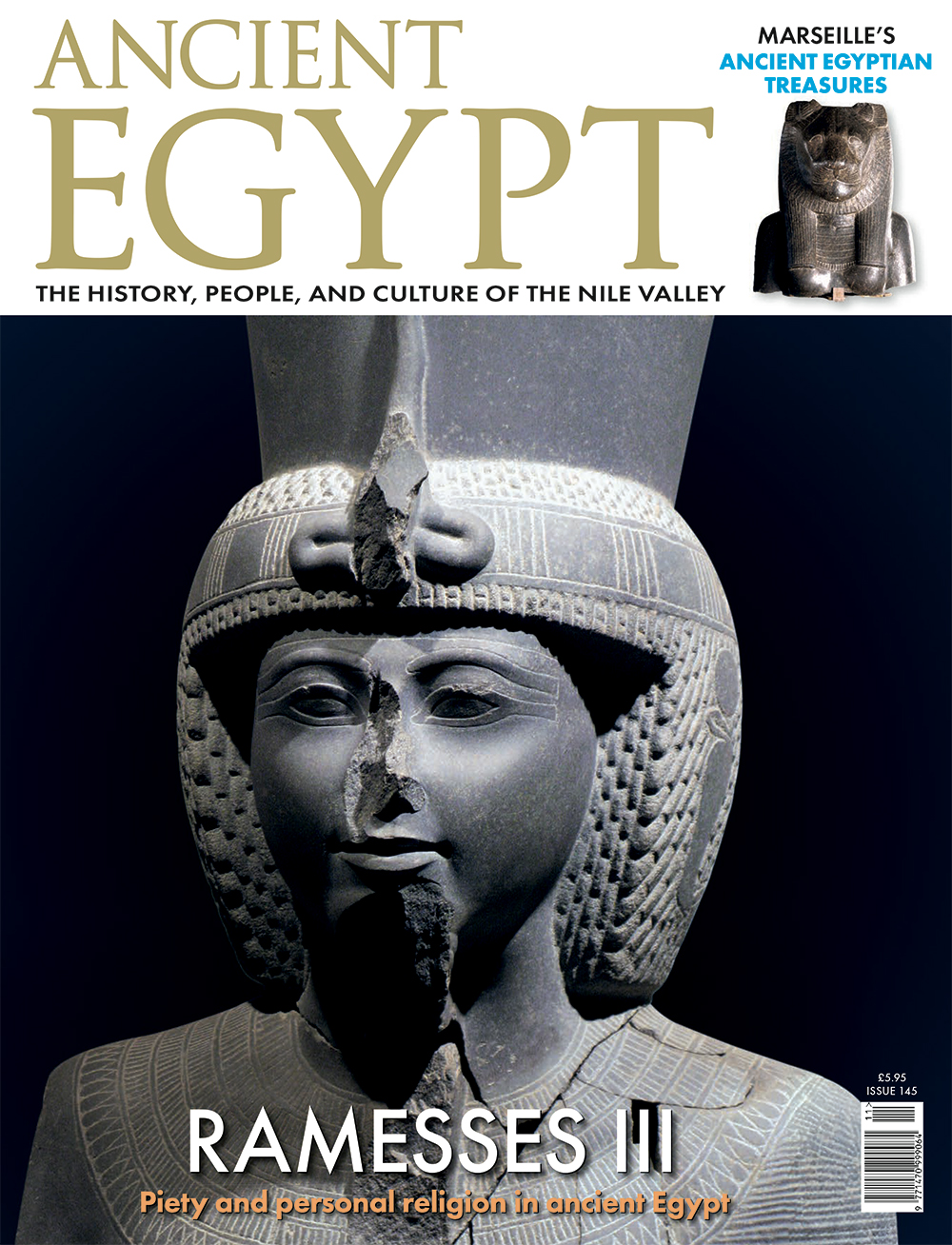The memory of Ramesses II, ‘Ramesses the Great’, survived long after his death, and his namesake Ramesses III was clearly in awe of his ancestor’s reputation and legacy. He even named his children after (some of) Ramesses II’s many offspring. As Diana Liesegang tells us in her article, however, there were some major differences in the way religion was practised under Ramesses III compared with earlier periods. He may have been a warrior-king, but he was also keen to show himself as a pious ruler who bent to the will of the gods.
The process of advancing our knowledge of the ancient civilisation is sometimes like building a jigsaw with missing pieces and no picture of the result. Such is the case with attempts to determine the identity of the people (or is it the land?) recorded in ancient Egyptian texts as ‘Shasu’. Were they the original Israelites? Sean Rigby thinks not. A similar problem can exist with the interpretation of physical finds, such as the reliefs from the Temple of Mentuhotep at Deir el-Bahri that Maarten Praet is attempting to reconstruct from hundreds of fragments. Despite these problems, as Julian Heath tells us, there were (and are) Egyptologists whose perseverance and meticulous attention to detail reap astonishing rewards: the ‘American Petrie’, George Reisner, was one of them.
For those of our readers who are looking for a new adventure, our intrepid correspondent Geoffrey Lenox-Smith describes a visit to the Temple of Hathor at Serabit el-Khadim, and, for those preferring something less strenuous, a visit to the Egyptology Museum at Marseille as described by Simone Petacchi sounds an attractive proposition. If you are reluctant to quit your armchair, however, Andrew Fulton’s analysis of the Book of the Dead of Ani might pass an hour or two.
Whether you choose to visit Egypt or a European museum, you are sure to spend less in real terms than visitors to Egypt in 1912. They would have seen some monuments familiar to us today, but many that have changed beyond all recognition, as Hilary Wilson reveals.

